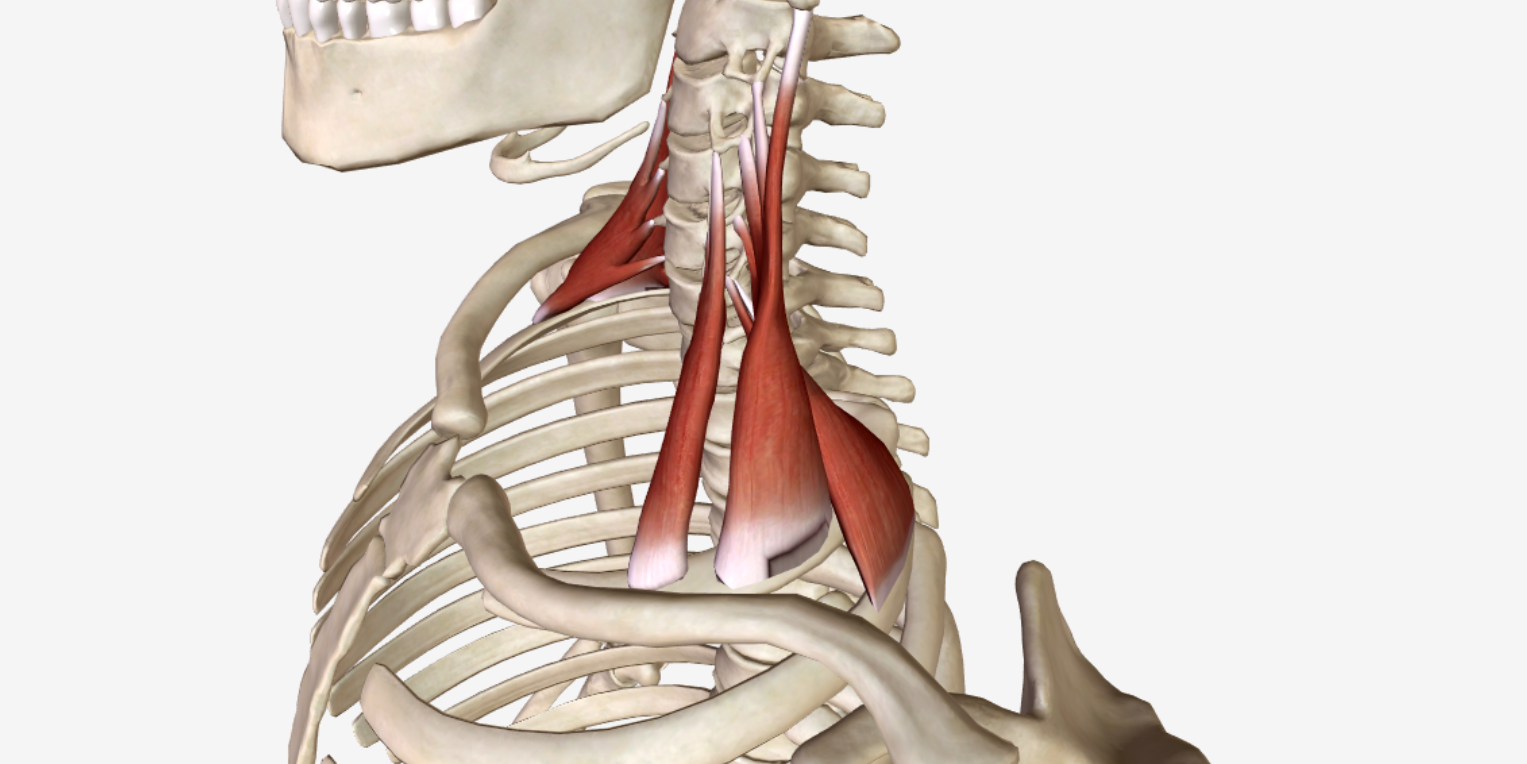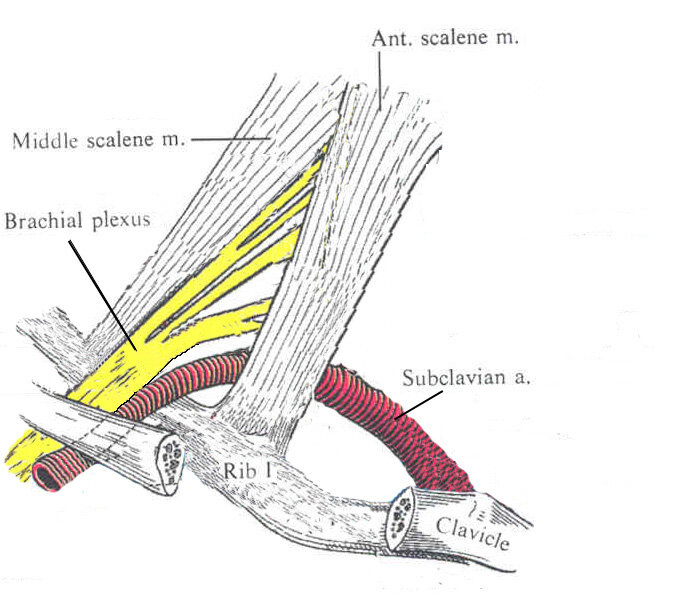A Real Pain in the Neck
No matter what people do for work, play or exercise, pretty much everyone who comes in to see me for a massage complains about neck pain. With that in mind, I’m going to spend a little time in the coming weeks talking about your scalenes, which are a group of muscles that run up and down the sides of your neck.
You have three scalenes on either side of your neck — anterior (front of your body), middle, and posterior (back of your body). All three muscles combine to flex your neck forward or to the same side, rotate your head in the opposite direction, and assist in lifting the rib cage up during forced breathing. Each begins at the transverse process of a lower cervical and end at the first or second rib, which in simpler language means that they attach at various points along your neck and extend down into your upper ribs.
The middle scalene is the largest of the three, and is often the easiest to find on your own neck. In fact, why don’t you take a moment right now and find the muscle we’re talking about? All you have to do is place your finger on the side of your neck and press gently. That thing that feels like a tight piano wire? — that’s your middle scalene. Odds are if you give it a good push you’ll feel a zinging sensation shoot down your arm or across your chest. (Who knew blog posts could be so fun?!)
(Also, if you’re really musical and have a good sense of pitch, perhaps you can play a little ditty on your scalenes: three, blind, mice…)
Now that we know what muscles we’re talking about, let’s discuss what your scalenes do. In addition to helping you turn and flex your neck, your scalenes have an important effect on your brachial plexus and subclavian artery, which are the routes your blood and nerves take to get down to your fingers. Both this plexus and major artery exit the spinal column between the mid and anterior scalenes before traveling under your collarbone and down your arm.
Why is this important? — because when your scalenes become compressed or damaged, they can clamp down on the nerves and/or blood supply to your upper extremities. Remember that zinging, numbing feeling you got when you pushed on your scalene? That’s exactly what happens when these muscles get damaged. (For a less masochistic example, think about what happens when you wear a heavy shoulder bag for a long time.)
In the coming weeks I’ll discuss some common injuries related to your scalenes, provide treatment options that bodywork can offer to offset these pains, and give some exercises and stretches that you can do on your own to keep your neck flexible, loose and pain free. If you have any scalene related questions or thoughts, feel free to post them in the comments section below, and as always, you can follow along on Instagram as we keep moving forward.



